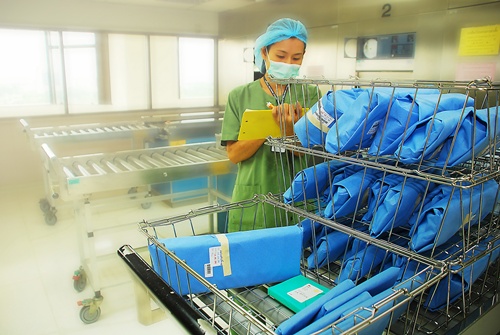Sterile Processing: Assembly and Packaging Process
The Sterile Processing Department, otherwise known as the Central Sterile Services Department — is one of the most important areas of the hospitals.
It is the centralized area where all instruments and apparatus are sterilized before use in order to prevent the spread of infectious diseases.
The CSSD area in hospital and other healthcare units serve as the support for doctors, nurses, and other practitioners, providing timely replenishment of sterile supply.
Sterile Processing Standards
The CSSD or Sterile Processing Department is not just in charge of cleaning, decontaminating, and sterilizing all sorts of equipment.
The sterile processing technician is also responsible for the gathering, disassembly, subsequent assembly, and distribution of the items they work with.
And as underrated as the sterile processing department is, the assembly and packaging process is also one that is frequently overlooked — and yet, it is integral to the CSSD policy and procedure.

The CSSD Assembly and Packaging Process
In order to provide a constant sterile supply to the different departments of the hospital, it is important to ensure that cleaned, decontaminated, and sterilized items are stored properly.
The sterile processing technician will be collecting each item and assembling them into trays or sets.
The assembly system is guided by recipe cards that contain detailed instructions for the specific apparatus.
Even before the sterilization process, the instruments will have to be properly packaged in order to maintain their sterility while the sterile services department stores them.
- The technique specified by the CSSD policy and procedure is such that the materials should cover and preserve the item while also allowing the sterilizing agent to have contact with the item.
The sterile processing technician has different options available for the packaging.
Among them are pouches, textiles, nonwovens, and rigid container systems.
After packaging, sterilizing, and storing the devices, the the sterile services department is also responsible for delivering the equipment to the other hospital department.
- This is done through an “issue counter” system, which not only monitors the timely and proper delivery of sterilized equipment as per the CSSD policy and procedure but also ensures that there is no backflow of unsterilized items.
There is a telephone system that allows other areas of the hospital to contact the sterile services department and request for fresh items.
The distribution center is housed in the peripheral unit, which is also called the Theater Sterile Supply Unit.
CSSD Requirement
As a rule of thumb, the CSSD area in hospital and other healthcare units will hold up to 5 times the daily hospital requirement in terms of sterile items.
This will allow the CSSD to restock other areas even when the demands spike. This is also overseen by the quality control personnel of the sterile services department.
The sterile processing technician is also mandated to ensure that the items in storage are properly organized in trays, cupboards, and wire baskets.
The job of the sterile processing technician is a challenging one, but is extremely important in making sure that the hospital runs smoothly.
All sterile processing standards are codified, however, to ensure that they can be easily followed after basic training.



nice